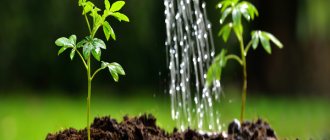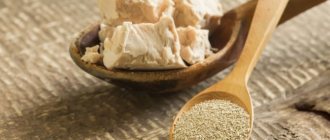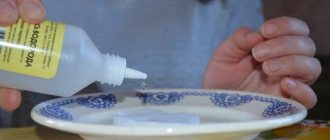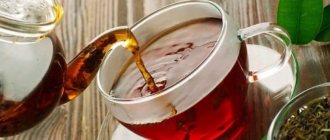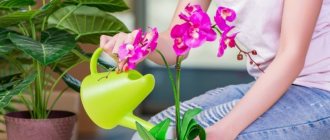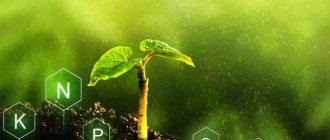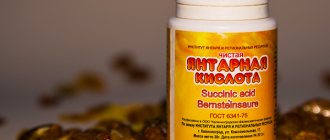Indoor plants always bring joy, peace and comfort to any person’s home. In order for flowers to be healthy and beautiful, they must be looked after. The main component of care is timely and correct fertilizing with fertilizers. In response to these actions, the flowers generously reward their owner with rapid growth and abundant flowering. Since the feeding area of indoor plants is limited by the boundaries of the pot, they need fertilizers like no other. Without them, flowers quickly deplete the soil and take all the beneficial substances from the soil, as a result there is nothing left for further good growth. Today there are a huge variety of fertilizers for indoor plants, each of which has specific benefits for flowers.
Latest articles about gardening
Strawberry diseases: photos and their treatment
Diseases of zucchini in open ground and the fight against them photo
Liquid vermicompost: instructions for use
When is it necessary to feed indoor flowers?
Indoor plants are fed only during the active growing season, when both their underground and above-ground parts grow and develop. It is during this period that fertilizers need to be applied. This rule does not mean at all that proper fertilizing is carried out only in spring and summer: there are also plants that not only do not have a complete dormant period and develop throughout the year, but also stars that bloom in autumn and winter. You need to choose the period when you need to feed each plant based on its growing season and its characteristics.
In spring and summer, all plants need feeding. The period of active development in crops, even those growing indoors, begins with an increase in daylight hours and lighting intensity. Typically, the growing season begins in March, and if the weather is favorable, it starts at the end of February. And with this, the period of active feeding begins. Active growing season ends in autumn, with a corresponding reduction in daylight hours and overall light intensity. The seasonal reduction in light usually manifests itself already in October, so the period of traditional fertilizing is usually completed during September.
Feeding in autumn and winter is not so easy to understand:
If the plant goes into a complete dormant period and completely stops growing, fertilizing in the fall and winter is not carried out at all. Typically, lignified and large plants, beautifully flowering crops that shed leaves or the entire above-ground part of the plant need to be stopped.
Reduced daylight hours, slower growth, cool wintering, partial dormancy require a reduction in fertilizing for the autumn-winter period. For example, for many decorative deciduous plants, although rare, winter fertilizing that maintains stable conditions is necessary to preserve the beauty of the leaves.
If the plant blooms in the cold season or autumn, then fertilizers are continued to be applied to it.
When and how to water plants for active growth
The modern market offers many complex fertilizers for home flowers. But an individual approach to each plant and the choice of nutrients specifically for it will allow you to feed it with exactly what you need. This is especially true for azaleas, succulents, violets and orchids. You can suspect the need for fertilizing based on the following signs:
- The growth of the plant has stopped abruptly, new buds and leaves do not appear;
- Shedding of leaves began at a time uncharacteristic for this plant variety;
- If there is no flowering at the required time;
- If the overall health of the plant has noticeably deteriorated, the color of the leaves has changed, they have become smaller, and have lost their elasticity.
The main components of what to water flowers for rapid growth include nitrogen, manganese, sulfur and iron. By introducing them during the growing season from the beginning of spring until late autumn, you can achieve a pronounced result in the form of active growth and abundant flowering. Additionally, potassium and magnesium will not interfere with the composition. You should not buy budget options that contain chlorine and nitrates; these components can significantly harm the flower or even destroy it.
When choosing any of the complex fertilizers for flowers, it is important to follow the application rules. Any solutions must be applied only to moist soil so as not to burn the delicate roots. For the same reason, it is not recommended to violate the proportions indicated by the manufacturer on the packaging. In the case of chemical fertilizers, it is much safer to use a dose less than recommended than vice versa.
When figuring out how to water flowers for abundant flowering, you can pay attention to classic alkaline fertilizers for the garden. The best of them are superphosphate and saltpeter, which:
- Stimulates active growth of green mass;
- Regulate metabolism;
- Improve the condition of membranes;
- Improves resistance to diseases and pests.
Types of fertilizers for indoor flowers
All fertilizers are conventionally divided into two large groups: mineral and organic. Organic fertilizers are of plant or animal origin. These can be waste products of living creatures: livestock manure, bird droppings, aquarium water. Plant nutrients include sludge from the bottom of reservoirs, compost, peat, and some types of food waste.
Mineral fertilizers appear as the results of the mining industry, processing of raw materials, and industrial waste. Most often, a mineral appears as a substance containing large accumulations of one element. For complex feeding, prepare a mixture of elements that satisfies all the needs of the plants. The main mineral elements important for the development of indoor plants are nitrogen, potassium and phosphorus.
A separate group of humic fertilizers can be distinguished. Humus as an independent preparation is ineffective for flowers, but in combination with one of the minerals, it is a high-quality fertilizer. Potassium humate is especially useful for indoor flowers.
Based on their chemical composition, fertilizers are divided into:
- alkaline (nitrate, lime);
- acidic (ammonium salts and sulfates, potassium salts);
- neutral (organic and superphosphate).
By release form:
- liquid;
- granular;
- in the form of plates (tablets).
At home, liquid mineral or complex fertilizers for indoor plants and flowers are most effective. It is convenient to use granular fertilizers as the main fertilizing applied directly into the ground during replanting in the spring. They release nutrients gradually, without oversaturation and burns of the root system.
Latest articles about gardening
Coffee grounds as fertilizer for indoor plants
Mineral fertilizers for feeding indoor plants
As you know, all plants need nitrogen, potassium and phosphorus, as well as various microelements (iron, copper, boron, manganese, sulfur, etc.). It is thanks to these substances that full growth and flowering are ensured and immunity is increased. The appearance of the leaves and stems will tell you that the plant is missing some element. But you shouldn’t let the plant become exhausted; it’s better to feed it regularly, at least in small quantities. We will look at which ones are better to choose below.
Mineral fertilizers for potted flowers are usually produced in liquid and dry forms (granules, powder, tablets, capsules and sticks). In terms of their composition, they can contain only one nutrient element (for example, nitrogen or phosphorus) or a complex of them (universal fertilizers). Mineral fertilizers should be used throughout the season, usually from spring to autumn. If you buy a ready-made product, always pay attention to the ratio of nitrogen, phosphorus and potassium (NPK) in its composition.
- NPK - what is it, how to determine the composition and amount of fertilizer
What kind of mysterious abbreviations are found on every pack of fertilizer and why are they needed in the daily life of an ordinary gardener?
Thus, the 11-6-9 ratio with a large amount of nitrogen is more suitable for young plants that need to increase their green mass. If the numbers are approximately like this - 7-9-13 - then the fertilizer contains a lot of phosphorus and potassium, which are necessary for flowering plants. The 13-15-18 mark usually indicates that the fertilizer is universal, it has all three components balanced, and it can be used in all situations.
You can also find ready-made products for succulents, ficus, violets, etc. in stores. Such drugs are very convenient to use. But if you have many different colors, then the situation becomes more complicated. Not everyone can afford to buy a package of products for each flower. And the expiration date may expire before you use up the drug. Therefore, in this situation, it is better to choose fertilizers for all types of plants. A note about this will appear on the packaging.
Look for products labeled “chlorine-free” and “nitrate-free.”
Typically, for healthy plants, choose a universal liquid fertilizer, which is diluted in water and applied according to instructions 1-2 times a month. The advantage of such fertilizers is that they can be used not only for watering, but also for spraying. Among the popular brands that produce fertilizers are the following: Agricola, Fasco, Zdraven, Pocon, Bona Forte, etc. When choosing, be sure to study the packaging and instructions for use.
An excess of nutrients is much more dangerous than a deficiency, so carefully monitor the appearance of the plant and if signs of an overdose appear (excessive growth of green mass, brown or light spots on the leaves, etc.), stop feeding, otherwise the flower will die.
The only disadvantage of liquid fertilizers is their fairly high price. Therefore, many flower lovers choose dry fertilizers, which need to be diluted in water themselves. Granules or powders are usually diluted in 10 liters of water, so such fertilizers are especially relevant for owners of a large number of potted plants.
Disadvantage of sticks and tablets: uneven distribution of substances, so some gardeners crumble the preparations and apply them around the entire perimeter of the pot, which is not always convenient
If you do not want to buy store-bought preparations, you can apply mineral fertilizers yourself. The same substances that you use for garden crops are suitable for this, only the concentrations will be different. In order not to make a mistake with the choice of fertilizing, we recommend reading about the signs of a lack of nitrogen, potassium or phosphorus.
- Nitrogen, phosphorus, potassium - signs of deficiency and excess in plants
What do excess or deficiency of nitrogen, phosphorus and potassium lead to? Find out in our infographic!
| Types of fertilizers | Titles | Consumption rate (per 1 liter of water) |
| Nitrogen | Ammonium sulfate, ammonium nitrate, urea (urea) | 1 g |
| Potash | Potassium sulfate, potassium salt | 1.5 g |
| Phosphorus | Superphosphate | 3-6 g |
For flowering plants, you can prepare the following mixture: dilute 3 g of superphosphate, 1 g of ammonium nitrate and 1.5 g of potassium salt in 1 liter of water, mix thoroughly and water the flowers.
Feeding indoor flowers with onion peels
At home, onions will successfully cope with the health improvement, protection and feeding of flowering and deciduous plants, except for succulents and plants with fleshy leaves, including aloe, cacti, fat plants and ficus.
We will need to prepare a decoction.
Place a good handful of husks in a saucepan, pour two liters of hot water into it and cook for 5 minutes over low heat.
After the broth has stood for a couple of hours, it should be filtered and used for spraying or watering flowers.
This decoction does not last long, so throw away any leftovers immediately. And the procedure can be repeated in a month.
Castor oil
A good product for feeding flowering plants. The preparation is quite simple: add 1 teaspoon of castor oil to a liter jar of water. After watering with such a liquid, house flowers do not get sick and delight their owners with their lush flowers longer. Aloe juice is one of the best natural stimulants for the growth of indoor plants. All you need to do is add a teaspoon of juice to a half-liter jar of water and mix. The product is used once or twice a week for root feeding. It’s worth a try to see the results are pleasing to the eye.
Feeding indoor flowers with aquarium water
In the water where aquarium fish live, a harmonious biological balance is established over time, thanks to which the life of aquatic inhabitants is maintained. It is largely due to the presence of beneficial bacteria.
When used for watering plants, the quality of the soil improves and the process of processing complex compounds is accelerated. This fertilizer should be used only during the vegetative phase, no more than once a month, so that the plants grow well and quickly.
The best drugs
Preparations that accelerate plant growth and increase the abundance of flowering are divided into 3 types:
- biological;
- chemical;
- cooked with your own hands.
Each type of fertilizer has its own advantages.
Biological
Biological fertilizers for plants contain glucose and sugar , which stimulate the formation of buds. Such drugs promote the growth and development of crops and strengthen their immune system.
Bio Bloom
Completely organic fertilizer to stimulate plant flowering. The biological activator in the preparation ensures the supply of nutrients exactly to the part of the plant where they are especially needed.
Necessary microelements are evenly distributed throughout the tissues and are actively absorbed by the plant. As a result, the growth of the crop, as well as the splendor and abundance of flowering, increases by 15-20%.
After treatment with Bio Bloom, the plant becomes more resistant to climatic factors and diseases.
Instructions:
- At the initial stages of flowering, the drug is diluted in proportions of 1 ml per 1 liter of water.
- Water the plant at the root with the resulting solution.
- Gradually increase the dosage to 4 ml of the drug for watering crops. Dilute in 1 liter of water.
Bio Bloom is used throughout the flowering period. Average price for the drug: 900 rubles.
Cannabiogen DELTA
A mixture of vitamins, nutrients, amino acids and hormones. It stimulates the rapid and lush flowering of plants, as it promotes cellular changes in crops.
The active substances in the drug have a positive effect on the plant:
- vitamins A and E (increases the immunity of crops);
- natural algae extract (stimulates the flowering process);
- enzymes (stimulate protein production, increase plant resistance to diseases and pests);
- oligosaccharides, betaine, polyamine (make flowering more magnificent).
Instructions:
- Add 4-6 ml of the drug per 10 liters of water.
- The dosage should be gradually increased every week.
- Spray the plant once every 2 days for 2 weeks during budding.
Average price for the drug: 1,500 rubles.
Biobizz Top Max
Organic fertilizer that acts in several directions at once:
- helps to increase the mass of inflorescences and the splendor of flowering;
- improves aromatic qualities;
- Helps the crop absorb and assimilate nutrients.
The lushness and abundance of flowering of crops is ensured thanks to humic acid and fulvic acids in the composition of the Top Max preparation.
Instructions:
- Shake the container with the drug.
- Dissolve 1 ml of liquid in 1 liter of water.
- Water with the resulting solution throughout the entire flowering period.
Average price for the drug: 1,700 rubles.
The video will tell you about biostimulants for flowers:
Chemical
Industrial preparations for abundant and lush flowering of crops are considered potent agents. Therefore, during their use, it is very important to follow the dosage and feeding rules .
Baikal EM-1
The components of the drug are a mixture of cultures of various beneficial microorganisms. They are based on lactic acid bacteria, they suppress the growth of putrefactive microflora. Baikal EM-1 ensures the growth of the root system and lush, abundant flowering of crops. Increases plant resistance to frost.
Instructions for use:
- dilute the drug with water in a ratio of 1:1000 (1 tbsp per bucket of water);
- Water the plants with the resulting solution once every 7 days.
The frequency of watering can be reduced or, conversely, increased depending on the condition of the plant and soil. You can also use Baikal EM-1 to make soil fertilizers.
Instructions for use (for compost production):
- Dilute the drug with water in a ratio of 1:1000 (0.5 tbsp per bucket of water).
- The compost base (tops, sawdust, manure) must be evenly moistened with the resulting solution.
- Stir the mixture evenly and cover with plastic wrap.
- The compost is ready for use after 2-3 weeks.
Average price for the drug: 500 rubles.
Epin
A crop growth stimulator, the action of which is aimed at increasing the stress resistance of plants. The active ingredient of the drug is epibrassinolide.
This is an artificially bred analogue of the natural plant hormone brassinolide. Most crops can produce it themselves, but not to a sufficient extent. Epin increases the number of buds and prolongs the flowering phase.
Instructions:
- Prepare a container for mixing the solution, a pipette, and a wooden stick.
- Pour warm water into the prepared vessel, add acetic (2-3 drops per 1 liter of water) or citric (0.2 g per 1 liter of water) acid. As a result, possible alkaline contents in the water are inactivated. And if the liquid contains alkali, the drug will lose its biological activity.
- Wear safety glasses, a respirator, and protect your hands with gloves.
- Using a pipette, draw the required amount of the drug from the ampoule.
- Add the drug from a pipette to the prepared acidified water. Stir with a stick.
- Pour the prepared solution into a spray bottle.
- Spray the plant generously.
To activate the growth of the crop and increase the number of buds, the plant is sprayed three times: in early spring, in mid-summer and in mid-autumn. During the dormant period of plants (winter), Epin is not used. Average price for the drug: 300 rubles.
Zircon
A preparation for stimulating the flowering of garden ornamental crops and indoor plants.
Instructions:
- dilute zirconium ampoule (1 pc.) in 1 liter of water;
- leave the resulting solution for 24 hours;
- Water the plant strictly at the root during the period of bud formation.
The greatest effectiveness from the use of the drug Zirconium is observed on the first day after preparing the solution. In the future, the loss of nutrients will be up to 65%. Average price for the drug: 350 rubles.
Feeding indoor flowers with banana peels
Much is known about the benefits of banana for the human body, but few gardeners know about its beneficial effect on indoor flowers. Both the fruit itself and its peel contain a large amount of vitamins and macroelements, among which phosphorus, magnesium and potassium are especially useful for green pets. Straw, bone meal, fish meal, whey, and potato peelings are also used as organic fertilizer. Houseplants always respond positively to this type of feeding, which can be done in several ways.
Option 1. Pour 250 ml of water into the banana peel and leave to brew until foam forms. The finished product is used twice a month, replacing standard watering.
Option 2. Banana waste is dried and crushed using a coffee grinder, and the resulting flour is simply mixed with the soil when replanting flowers or immediately after it. In the latter case, you can simply scatter the powder over the surface of the substrate.
Latest articles about gardening
The best varieties of apples
Top best varieties of cucumbers: the most delicious and most productive
The most delicious varieties of zucchini
How to water indoor flowers to grow: 9 effective remedies
Flower growers successfully use effective folk remedies for the growth of indoor flowers.
Banana peel infusion
It turns out to be very rich in microelements. Flowers love it, but Decembrist and orchids especially like it. Has a long-lasting effect:
- Cut two peels into pieces and place in a liter of warm water.
- Cover loosely with a lid and place in a warm place for 5–7 days.
- Strain the infusion and dilute with clean water (1:1). Water no more than twice a week.
Squeezing beneficial microelements from carrots for flower growth
One of the simplest and cheapest ways. Plants begin to grow actively. Increases immunity to diseases. Suitable for all indoor plants. Carrots contain a large set of micro- and macroelements:
- Choose carrots with bright colors.
- Grate one medium-sized carrot and add a liter of water at room temperature.
- Leave it for a day.
- Strain and water undiluted.
Photo pexels/cottonbro: Squeeze contains a rich set of micro- and macroelements.
Mustard sprouts
It is a natural nutritional plant growth stimulator:
- We germinate the seeds in a dark place with water. You can take a pan and cover it with a lid. In a week, seedlings and cotyledon leaves will appear.
- Grind the sprouts in a blender or mortar. To make it easier to grind, you can add a little water.
- Add a liter of warm water to 100 g of seeds and get a concentrate.
- Let it brew for 2-3 hours.
- We filter.
- Water at the root, dilute 1:5.
Infusion of ash for the growth of indoor flowers
Wood ash is the best natural phosphorus and potassium fertilizer. This is prevention against various diseases. Prepare the solution as follows:
- 100–200 g of wood ash is added to a bucket of water. Buckets come in 8 and 10 liter sizes - it doesn’t matter which one it is. Mix thoroughly.
- Leave for 2-4 hours and water at the root. Can be used once a month.
Photo: Wood ash is useful for indoor flowers.
Iodine solution
Iodine cannot be used in its pure form! Iodine stimulates active plant growth and protects against diseases. Getting into the soil, it forms a compound with potassium, due to which potassium is better absorbed by the plant. Potassium is an essential element for all plants. The root system begins to grow more actively.
| Recipe. Add 1 drop of iodine to a liter of warm water. Mix thoroughly. Water abundantly, at the root. |
Coffee grounds
The simplest feeding. After drinking coffee, do not throw away the coffee grounds from the bottom, but water your indoor flower. Then loosen the soil. This feeding is useful for the roots, since loosening is beneficial for them, the soil is slightly acidified - this is important for those plants that need a slightly acidic soil reaction (hydrangeas, gardenias).
Tea infuser for fast flower growth
If there is any tea left in the teapot, you can water the flowers with the rest. But we must remember that, like coffee, it increases the acidity of the soil. And one more not very pleasant moment: if you often pour it into flowers, black flies and other insects may appear, which you will then have to fight. Therefore, everything must be done in moderation!
Sugar
In the soil, sugar breaks down into fructose and glucose. Plants need them for active growth. You can water the plants with sugar once a week. Another option is to take some sugar and sprinkle it on the surface of the soil in the pot, and then water it with water. The sugar will dissolve and have the same effect!
Photo by O. Nikonorova: Sugar promotes intensive plant growth.
| On a note. For a liter of water we take 2 tbsp. spoons of regular sugar. |
Infusion with garlic
The infusion has proven itself to be a good growth stimulant:
- We clean the cloves from their shells and chop them. Can be crushed or cut.
- You will need 100 g of chopped garlic per liter of water.
- Leave in a dark place for 5 days.
- Then filter through a fine sieve or cheesecloth and dilute with clean water in a ratio of 1:10.
- We water at the root. We alternate with regular watering. The break between adding garlic tincture is 2 weeks.
Feeding indoor flowers with coffee grounds
This natural fertilizer is widely used by many gardeners. Sleeping coffee makes the nutrient substrate looser and lighter, increases acidity and the amount of oxygen. Features: increasing soil acidity does not have a positive effect on all indoor plants. Fertilizing with sleeping coffee is recommended for azaleas, hydrangeas, lilies, rhipsalis, roses and many evergreen species.
Application: Mix coffee grounds with soil mixture in a pot.
The most famous and effective homemade fertilizers for feeding indoor plants are reviewed. We will be glad if it becomes easier for you to feed indoor flowers, and they respond with their beautiful appearance.
Milk
It's surprising that florists advise using milk for watering. But in reality, only a teaspoon of milk is needed per liter of water: this is the solution that is used to water indoor plants. But in order to wipe the leaves, they use a more concentrated product, where only 10 times more water is taken than milk. This procedure makes the leaves shiny and fresh.
Of course, experienced gardeners probably know other fertilizers. Tell us in the comments what tools and techniques you use to make your home flowers grow by leaps and bounds and delight you with a beautiful view all year round.
Features of popular types of garden flowers
When choosing fertilizer and the method of its application, it is necessary to take into account the species characteristics of flower crops. For example, when growing roses you cannot do without organic matter, and for lush flowering you will have to feed the bushes at least 4 times a season.
Annual plants also respond very well to fertilizing and actively develop, but organic matter cannot be used for all crops. For example, asters react poorly to the application of manure and get sick, and such annuals as marigolds, nasturtiums and gillyflowers form lush tops to the detriment of flowering. These annuals need nutrients, but for fertilizing it is recommended to use a complete complex mineral fertilizer.
Corms and rhizomatous perennials such as gladioli, peonies, and delphiniums also require high doses of fertilizers. It is recommended to feed them 4 times per season: at the beginning of the growing season with preparations with a high nitrogen content, during development and flowering with complex mineral fertilizer, and at the end of the growing season with phosphorus-potassium fertilizer.
Dahlias
To successfully grow modern dahlia hybrids, regular foliar feeding is required due to the insufficient development of the root system, which is not able to provide the plant with a full range of substances for full flowering.
Plants that prefer acidic and slightly acidic soils (hydrangea, rhododendrons, heather) will benefit from mulching with high-moor peat or pine sawdust, which will naturally acidify the soil.
When planting beautifully flowering plants on your site, you must always remember that the formation of buds and flowering requires a huge amount of nutrients, which are often lacking in the soil. Timely and rational application of fertilizers will improve the appearance of plants and help prolong flowering.
Useful tips for caring for flowers
